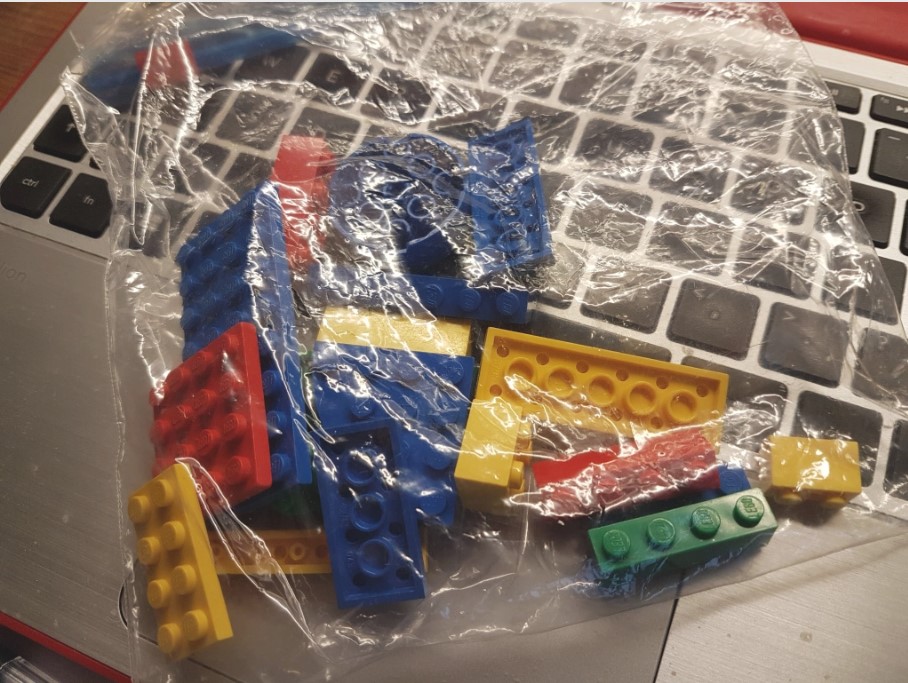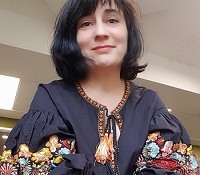You used LEGO(R) in your Viva? You must be kidding!
Guest author: Chrissi Nerantzi (Centre for Excellence in Learning and Teaching at Manchester Metropolitan University)

The LEGO® kit I made and used in my viva
You used LEGO(R) in your Viva? You must be kidding!
Well, I did! I used a handful of LEGO(R) bricks in my viva. Some or many may think that it would be a very risky strategy and avoid anything that is not traditionally used in a viva. I had prepared by little LEGO® kit, tested it and tested it again to see if it really worked and truly helped me to explain the basics of phenomenography, the methodology I used, to explain it to the examiners if I was asked about my methodology, a common question in a viva. I would then decide if it would be useful to explain it using the bricks. It wasn’t that I had to build this in regardless. On the contrary, it was an informed decision and only if I felt that the examiners were open to such an approach. And they were. I have written about my viva experience but also my preparation on my blog and you can find my reflections there together with resources you may use if you are preparing for your viva or help others in this process. Have a look here and you will find further posts linked to my PhD journey.
After my viva, I wanted to explore the use of LEGO(R) and LEGO(R) SERIOUS PLAY(R) in the context of doctoral students development and doctoral supervisors development. That led me to another phenomenographic study in this specific area and a dissertation through which I got an MA in Coaching and Mentoring in Education. This time, I reached out for help during the analysis stage and Margy Macmillan and Paul Kleiman helped me make sense of the data through which the categories of description and the outcome space emerged. A paper has also been published in a special issue around the use of LEGO(R) in higher education, based on the following study.
So why LEGO(R)? I have used LEGO(R) SERIOUS PLAY(R) and other LEGO(R)-based approaches since 2010 when I reached out to the bricks to make professional discussions on the PGCAP (Postgraduate Certificate in Academic practice, also PGCHE) at the University of Salford where I was working at the time, more meaningful, less stressful and more enjoyable for colleagues. How it worked was captured in a paper we wrote with a colleague at the time on the programme with whom I had also discussed the idea before introducing it. This work was done before I had read anything about LEGO(R) SERIOUS PLAY(R). I used it intuitively as part of my practice to experiment with different approaches. Then it snowballed from there. I used LEGO® in various sessions, read about LEGO(R) SERIOUS PLAY(R) which since 2010, that same year I started experimenting with LEGO® became available as an open source method (see the full guide), did the facilitator training and started sharing my work via social media, conferences and publications. I also started connecting with others who were using it at the time such as Pfr Alison James and Pfr David Gauntlett. You must check out their work in this area!
Through my experiments and applications with staff but also with students (a further related publication and example of how I used it with students), especially after arriving at Man Met in October 2013 and the workshops and courses we have offered, I could clearly see that the method that uses the bricks is very versatile and very useful when exploring complexity in a higher education context. So when I completed by doctoral studies, I wanted to see if and how LEGO(R) could be useful for PhD students especially. Opportunities were there to connect with our Graduate School and soon started offering LEGO® sessions to prepare for a viva. I love being among PhD students and helping them grow their confidence and self-belief. A short while I was a PhD student myself and really valued any help I would get from my supervisors and the wider support network, in my case the Global OER Graduate Network (GOGN) as my research was in open education.
So if you are preparing for your viva, think about something that you may struggle, or, ok, have difficulty explaining just by talking about it.
If you can think of something, it could be the methodology, just like in my case, or something else, like your theoretical framework or a model you created perhaps, explore if LEGO®, or any other material(s) could help you visualise with clarity the key points you want to make and to illuminate specific connections. Believe me, it is easier to have something in front of you to talk about, be focused and articulate an informed response, instead of steering into the empty space. We all learn best when we combine pictures and words (check out Mayer’s multimedia theory of learning) and building a model can help you tell your story with greater clarity, precision and focus. Have a look at Seymour Papert’s work around constructionism). Furthermore, using a model, an artifact or an object will move the attention to this, which will be much less stressful for you.
Of course it doesn’t have to be LEGO(R). You may reach out to other materials. Whatever works for you. Give it a go during your viva preparation and see how it goes. Transform your viva into a more hands-on experience.
Acknowledgements: Thank you for giving me the opportunity to offer the “Bag of LEGO® for your viva” workshop at the recent Royal Geographical Society Postgraduate Conference 2019, that took place in April at the Manchester Metropolitan University, Manchester. I really enjoyed being among many PhD researchers. Thank you also for this kind invitation to write a little something here for your blog. I hope it will be useful for colleagues. Let me know if I can help in any way.

Dr Chrissi Nerantzi is a Principal Lecturer in Academic CPD (continuing professional development) in the University Teaching Academy at Manchester Metropolitan University. She is also Certified LEGO(R) SERIOUS PLAY(R) Facilitator,. was National Teaching Fellow 2015, ALT Learning Technologist of the Year 2017, and received the GO-GN Best Open Research Practice Award 2018. Follow her on Twitter @chrissinerantzi
When you subscribe to the blog, we will send you an e-mail when there are new updates on the site so you wouldn't miss them.


Comments 2
[…] Nerantzi shares her invaluable experience of using Lego(R) for the VIVA / PhD Defense, which can also be useful for group work and […]
[…] the creative end, Chrissi Nerantzi suggests different ways in which you can use Lego bricks to defend your thesis. Even the corporate sector can use Legos for group collaboration and team building! So get at it: […]